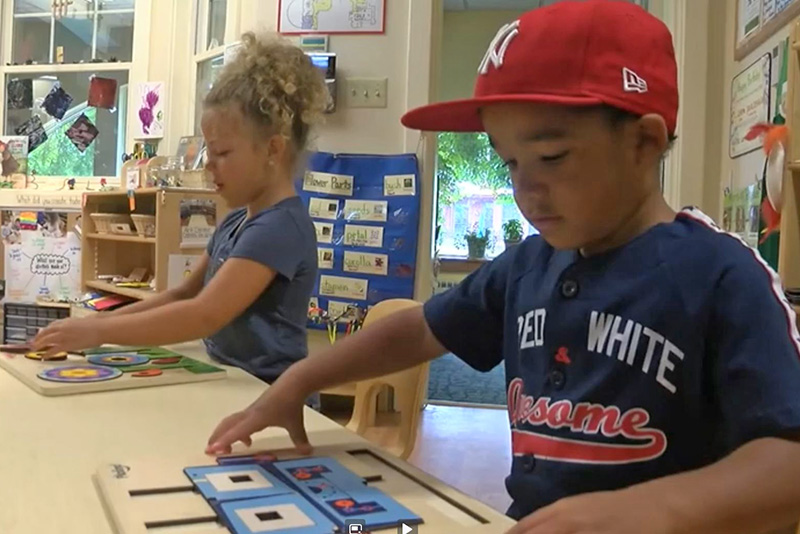- Apply
- Visit
- Request Info
- Give
'What Makes a Toy Good?'
Written by Michael Rouleau
Published on December 04, 2020
Eastern premieres video on 'Lessons Learned from 10 Years of the TIMPANI Toy Study'

Eastern released a short video on Dec. 3 describing the best toys for young children based on 10 years of research through the Center for Early Childhood Education's (CECE) renowned TIMPANI Toy Study. An acronym for “Toys that Inspire Mindful Play and Nurture Imagination,” TIMPANI is an annual study that investigates the quality of play elicited by different toys in natural settings. Due to precautions in response to the COVID-19 pandemic, Eastern cancelled its 2020 study, instead producing this short video summarizing the chief findings and lessons from the past decade.
Titled “What Makes a Toy Good? Lessons Learned from 10 Years of the TIMPANI Toy Study,” the six-minute video features new footage — filmed before the pandemic — of children interacting with some of the highest-scoring TIMPANI toys. Staff members from Eastern’s on-campus preschool joined Professor Emeritus Jeffrey Trawick-Smith, the study’s principal investigator, to provide commentary and insight based on years of scientific study and classroom experience.
Researchers have found that no matter how much toys evolve technologically, simple is better. “Some of the highest-scoring are good, old-fashioned toys that have been around forever,” said Trawick-Smith, mentioning such classics as wooden blocks, Tinkertoys and Legos. “Toys that have been used for generations are still very valuable for children’s development.”
Led by Eastern’s CECE, a different selection of toys is placed each year in preschool classrooms at the on-campus Child and Family Development Resource Center (CFDRC). Student researchers use hidden cameras to videotape children playing with the toys, then code the footage according to the study’s evaluation rubric, which assesses how well each toy inspires children’s problem-solving, cooperation with peers, creativity and use of language.
Trawick-Smith says that the two most powerful types of toys are construction toys and replica play toys — small people, animals and vehicles. Using these toys, “Children play out elaborate scenarios, promoting symbolic thought, social interaction and verbalization.”
The TIMPANI study has found that the most powerful toys for early childhood development are simple, open ended, nonrealistic and feature multiple parts. Simple, open-ended toys promote creative uses. Nonrealistic toys are ambiguous and don’t suggest a particular use, which promotes language skills as the children need to explain their play scenarios. And toys with multiple parts promote cooperative play as children tend to share, negotiate and use teamwork while using them.
Heather Standish ’15, a lead preschool teacher, pointed out another characteristic of a powerful toy: “One that everyone can engage with,” regardless of language — toys that bridge language barriers during cooperative play.
Since its inception in 2010, 26 Eastern students, led by early childhood faculty researchers, have reviewed the quality of play stimulated by more than 100 toys, annually crowning those with the highest score as the TIMPANI Toy of the Year. Approximately 20 of the study’s highest-scoring toys were placed in five CFDRC classrooms for this new video.
Watch the video on the CECE’s website at https://www.easternct.edu/center-for-early-childhood-education/timpani/what-makes-a-good-toy.html. To learn more about TIMPANI, visit https://www.easternct.edu/center-for-early-childhood-education/timpani/index.html.


